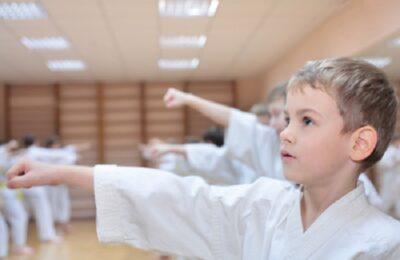
Children self-defense
Every day we make decisions to protect our children. We decide what they eat, where they go to school, and even influence who their friends are. We see that they get to the doctors when they are sick or injured and we teach them what’s right and wrong.
But have we taught them what to do when we are not there? There are plenty of situations where our children need to make wise decisions and should they ever be followed or attacked by someone, they need to know how to respond. While we do everything we can to protect our children, we haven’t done our job if we haven’t taught them to protect themselves. That is why teaching basic self-defense concepts is important.
Avoidance is the Best Approach
One of the best approaches to dangerous situations is to avoid them altogether. While this may be common sense to us as parents, children don’t have the ability to evaluate risks to the same extent as we do. Therefore, we need to teach them basic principals to evaluating risk as well as what to do once danger is established.
Awaken Your Child’s Love of Learning, History And Adventure!
If your child starts to feel uncomfortable in any given situation, they should feel free to leave and go somewhere where they feel more comfortable. If they are walking on a road, running on the track, getting into an elevator or in any other situation where they are alone and begin to feel uncomfortable, they should leave and go where there are people. This is not about instilling fear in your child, but teaching them to use their common sense and intuition to wisely lower the risk they place themselves in. Situations with an attacker can quickly escalate, so avoiding them altogether is a far better option.
Situations Your Child Should Avoid
- Well-lit, highly frequented, open areas are often one of the safer places to hang out. If you ride on a bus, sit up front near the bus driver and stay awake.
- Isolated places, especially at night, should be avoided and only traveled through in a group of people you trust.
- Communication is very important. Parents and siblings should know your daily schedule. If you plan to go out at another time, inform someone of where you are going, who you’ll be with and when you plan to be back. While this may feel a little restrictive, nothing will get you help faster than your parents if you fail to show up home at the agreed upon time.
- Attackers are looking for the easiest target and will look for timid, fearful people first. Walk with confidence and respond with authority if you are confronted. Yelling words like “Go away,” “Police,” and “Help” can discourage an attacker quickly. Walking with your dog can also encourage an assailant to look elsewhere. While some dogs are more intimidating than others, even a barking five pound dog can discourage a would-be assailant.
Personal Control Helps Diffuse
When it comes to bullying situations, teaching your child personal emotional and physical control can help de-escalate the situation. A combative person may give up if you calmly agree with what they say. Rather than adding fuel to the fire, maintaining control over your emotions can go a long way toward calming someone else down. After the situation has passed, the child can then approach the authorities and parents to deal with the bully and ensure that the situation doesn’t occur again.
(Note to parents: If your child complains of a bully, please take them seriously. Many parents and teachers brush complaints off, but children can face a lot of emotional and even physical abuse from bullies. This is not a time to teach your child to “toughen” up, but rather to show them that help is available and they don’t deserve the treatment they are receiving.)
Pocket Sized Solar Generator Provides Emergency Backup Power
Self-Defense Instruction is Valuable
Unfortunately attackers are often someone the child knows and thought they could trust. And sometimes they don’t back down and cannot be escaped easily. While we all hope our children are never in a situation where they need to use self-defense moves, giving them the training and experience to handle a tense situation can build self-confidence and potentially save a life. You can find self-defense classes through friends, community boards, the local YMCA, or even the hospital. The PE teacher at school can be an excellent resource as well.
Nothing can replace the value of learning self-defense tactics and practicing them. Many attackers anticipate common moves, but a self-defense class can tell you how to catch your attacker off guard. Keeping self-defense moves familiar through taking a class can be excellent preparation for smooth and confident defense reactions if needed.
Prepare your child for a world that isn’t always kind by instilling in them wisdom, self-confidence, and self-defense basics. It just may save their life.
What do you think about teaching children self-defense? Let us know in the comments section below.
 Off The Grid News Better Ideas For Off The Grid Living
Off The Grid News Better Ideas For Off The Grid Living



